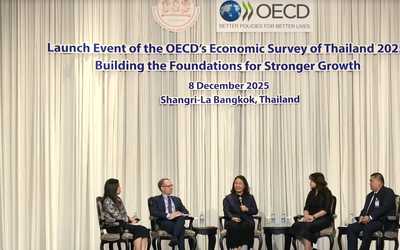Inflation at Risk in Thailand
Abstract
Using monthly Thai data from 2003–2020, we examine the determinants of the future distribution of inflation. We evaluate how different risk factors predict 1-year- ahead future distributions of CPI inflation and its components. Risk factors come from 5 different groups of variables: inflation expectations, domestic economic activity, global economic activity, financial conditions, and component-specific factors. We obtain points on the future distributions of inflation through quantile regressions and fitting those points with skewed-t distributions. Our focus is on the outlook in the tails of the distribution, which recent literature referred to as `inflation-at-risk.' We find, as expected, that the whole inflation distribution has shifted lower, and thus the probability of negative inflation has increased markedly in recent years. There is a structural break around 2015 that affects both the distributions of inflation and their determinants. This structural break makes it challenging to make out-of-sample forecasts, thus, we focus on in-sample evaluation and explanations. For risk factors, we observe that the tightening of financial conditions and the decreasing world production are prominent sources of downside risks to inflation. Inflation expectations also play a smaller role in the lower quantiles, signaling its lower effectiveness in anchoring actual inflation during disinflationary periods. Finally, high global and domestic economic activity can be effective in decreasing downside risks in the lower tail, providing policy makers a way to counter these risks by stimulating the economy.









